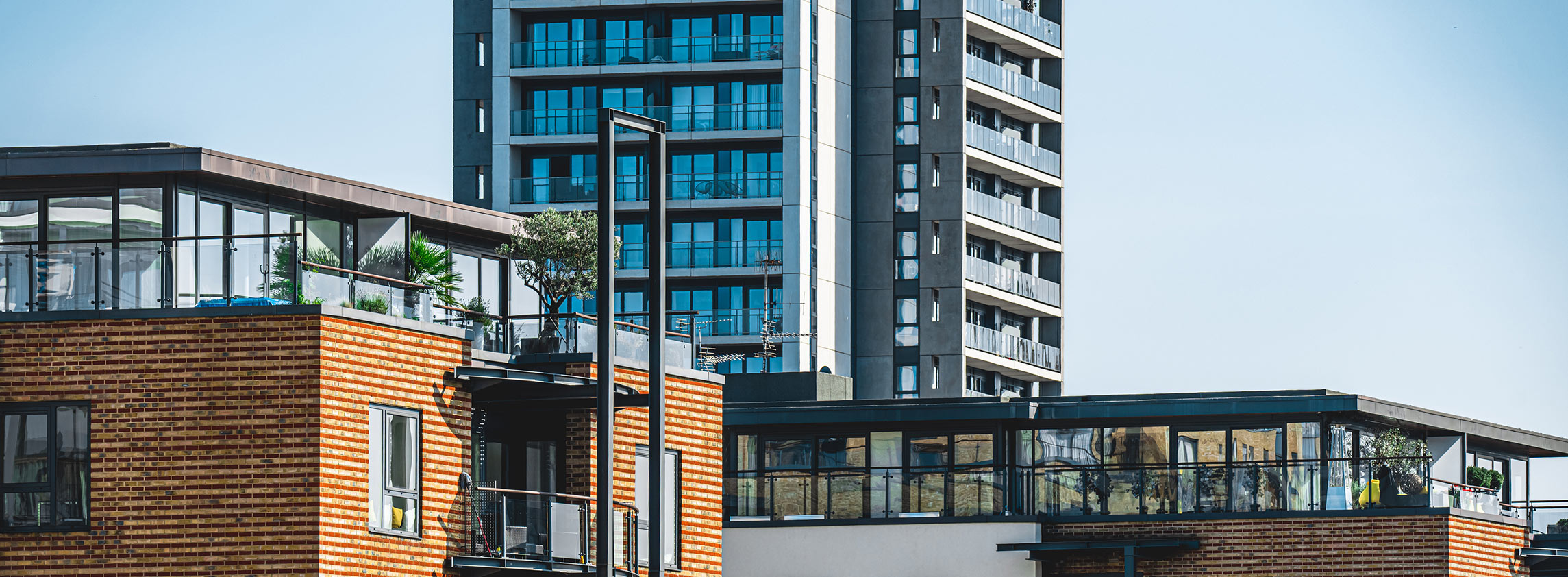Viability, planning constraints and increasing affordable targets act as barriers to development
- Private starts on homes in London are down significantly since 2017, as sales numbers cooled across the mainstream and prime markets. But we have seen an uptick in sales more recently
- London housebuilding is dominated by the large PLC players. The top 15 by delivery have built 45% of homes since 2017. Housebuilders are looking at alternative exit routes such as the Build to Rent (BTR) sector to support delivery rates
- New homes delivery across London has been heavily concentrated in East London. Across the city there has been an under-delivery of homes at lower price points, where demand is highest.
Starts on London schemes have slowed in the last five years
Between 2017 and 2019, the London housing market was starting to cool, following a flurry of activity in 2015. The Brexit vote had created uncertainty within the market, and activity fell from buy-to-let landlords who had already secured purchases before the changes to additional stamp duty in 2016. On the upside, the introduction of the 40% Help to Buy (HTB) loan in London helped to support mainstream sales at around 16,400 per year. And there was confidence this would sustain demand, with over 22,000 mainstream homes started in 2017, on par with the peak in 2015.
Fast forward three years, and we’ve been through a period of a similar policy environment but with the added disruption of a pandemic. Remarkably, the mainstream sales market has remained resilient, with sales between 2020–2022 H1 1% above the pre-pandemic average. Completions, which were threatened by reduced labour and materials availability during the pandemic, have only fallen 5%. But starts on site have taken a hit, falling by 25%.
New homes starting on site have fallen 25% below their pre-pandemic average
Sophie Tonge, Residential Research Analyst, Savills Research
The prime market has taken a slightly bigger knock. The global pandemic prevented international travel and caused a temporary closure to the real estate market, impacting sales by 28% relative to their pre-pandemic levels. Starts and completions were also down by 17% and 14%, respectively.
Can the market recover to its pre-pandemic state? Viability, planning constraints and increasing affordable targets act as barriers to development. But the latest quarters of data suggest a rebound in activity. Total private starts in the year to Q2 2022 are up 22% on the same period in 2021, with sales showing a similar size of recovery. However, with planning consents stubbornly low, it’s difficult to see how this rebound can continue.
Top 15 players have delivered almost half of all homes constructed since 2017, with a significant increase in BTR delivery
Major PLC housebuilders have continued to dominate the market in the last five years. The top 15 players by volume of delivery have been responsible for 45% of London’s new homes since 2017.
BTR homes have also made up a growing segment of delivery for many of the top players. BTR completions as a proportion of all private completions have increased from 17% between 2017 and 2019 to 28% over the last two years, according to Molior.
This ranges from sole BTR developers forward funding homes, such as Quintain at Wembley Park, to block sales within a wider scheme being used as an alternative exit route. Major players are likely to continue dominating the market and may increasingly look to BTR as HTB ends and mortgage affordability constraints increase demand in the private rented sector.
One in four new homes have been delivered in just three East London boroughs
Delivery of homes across London has by no stretch been equally balanced across the city. Significant hotspots have emerged in areas where development conditions have been favourable. Fast transport links, availability of land, and cooperative local authorities have meant new homes in the capital have clustered together.
Canary Wharf and wider East London has seen significant delivery, with E14 alone accounting for 8% of total starts and 7% of total completions in London since 2015. However, it also now has the highest number of complete and unsold homes.
Many more homes need to be delivered at less than £450 psf, where historically only 4% of delivery has been placed
Sophie Tonge, Residential Research Analyst, Savills Research
Almost one in four units delivered across London since 2015 has been within the three East London boroughs of Tower Hamlets, Newham and Greenwich. This has likely been driven by post-London 2012 Olympics investment alongside infrastructure improvements in boroughs close to key employment hubs. Significant large clusters of delivery can also be found in Wembley, Nine Elms and Croydon.
But the disparity continues to grow between areas where new build development is occurring and boroughs which are more prohibitive in their planning policy. We forecast that Tower Hamlets is set to continue to deliver the most homes over the next five years, and whilst some outer London boroughs such as Enfield, Ealing, Kingston Upon Thames, and Bexley are all forecast to increase their target average annual delivery by over 200%, this is coming off a low base.
There remains a significant gap between delivery and housing targets across different boroughs. Despite Tower Hamlets, Greenwich and Newham accounting for the highest delivery over the last three years they are still not meeting their borough housing targets set by GLA. Whereas outer London boroughs, such as Bexley and Sutton, are meeting targets, these locations only support a fraction of delivery when compared with some inner London boroughs. This suggests targets are not encouraging development in the right places to provide homes at the appropriate price points.
Many more homes need to be delivered at less than £450 psf, where historically only 4% of delivery has been placed. By not providing this much-needed and most undersupplied more affordably priced housing, London is at risk of growth in its working population due to affordability constraints and limited stock.
Read the other articles within this publication below.

.jpg)
.jpg)
.jpg)